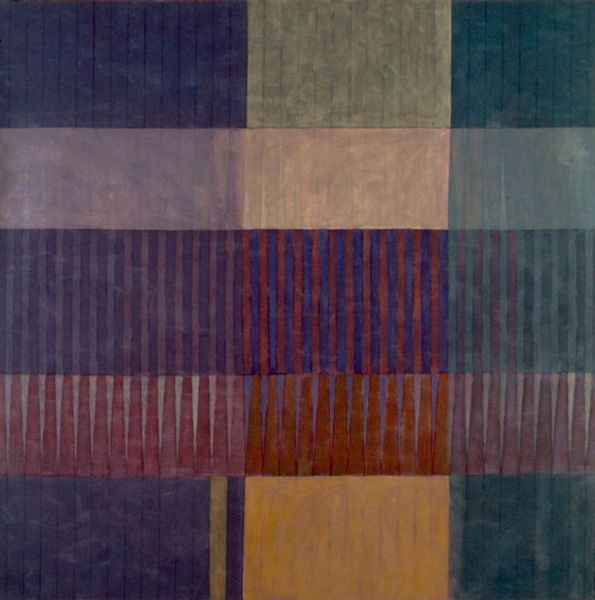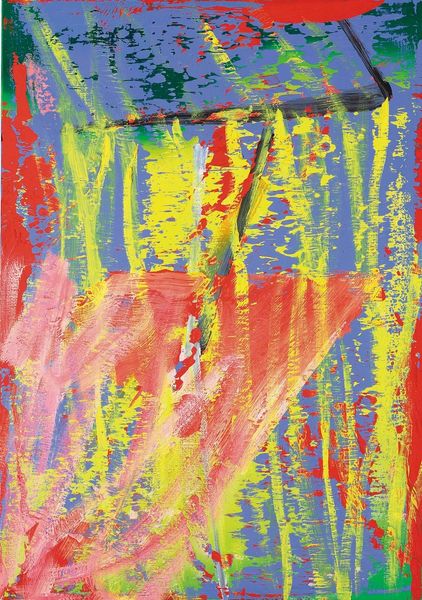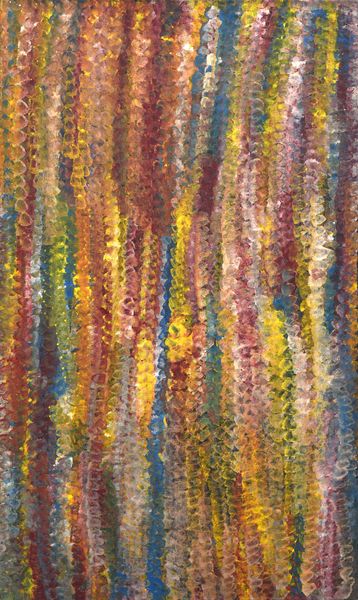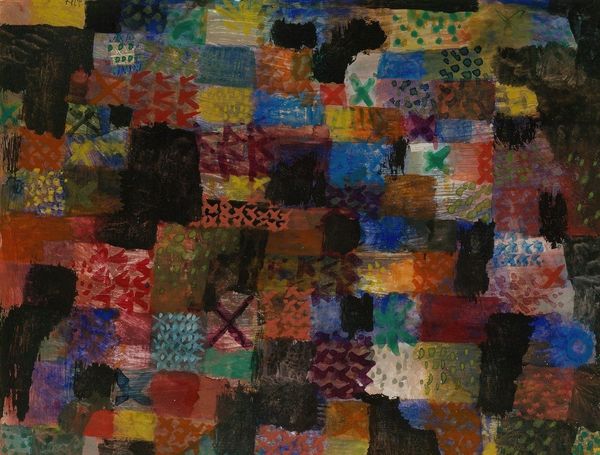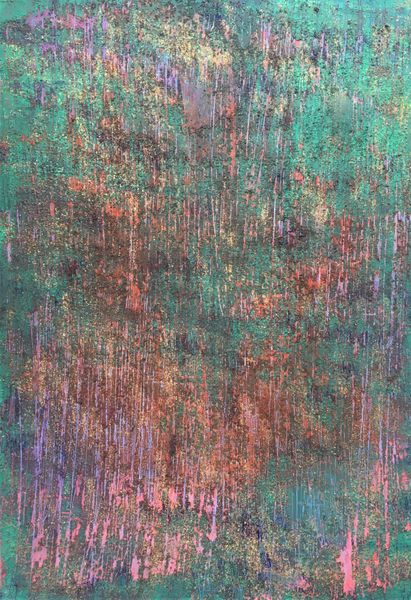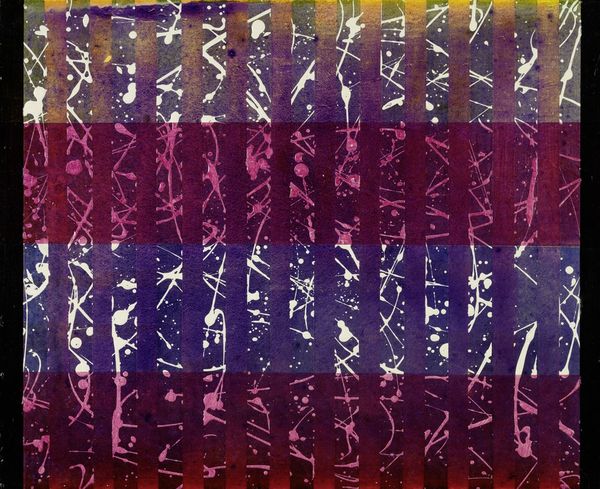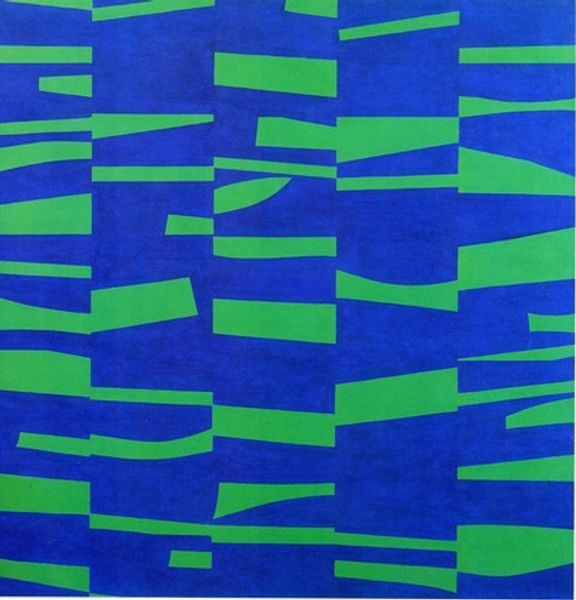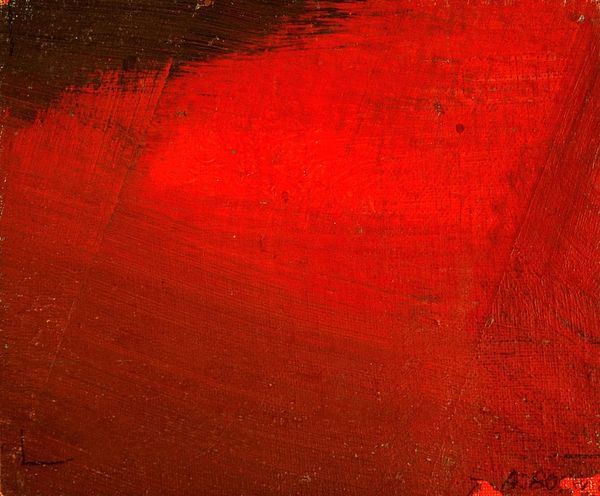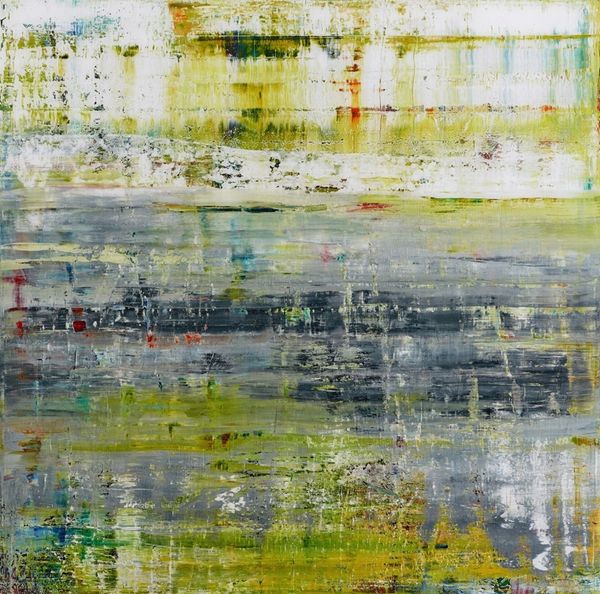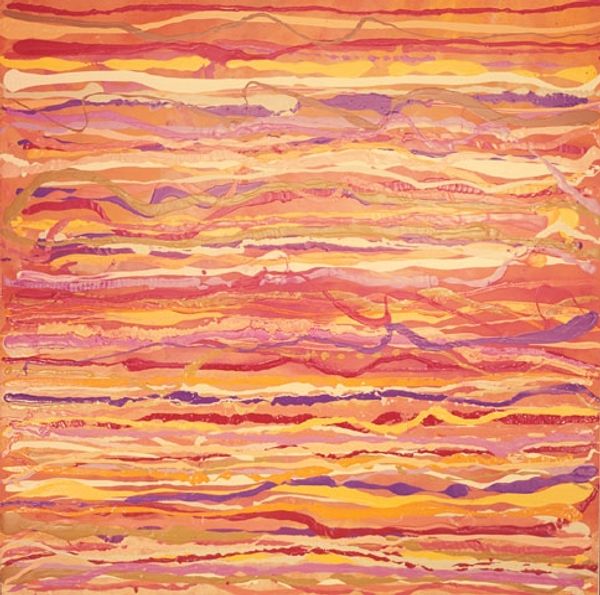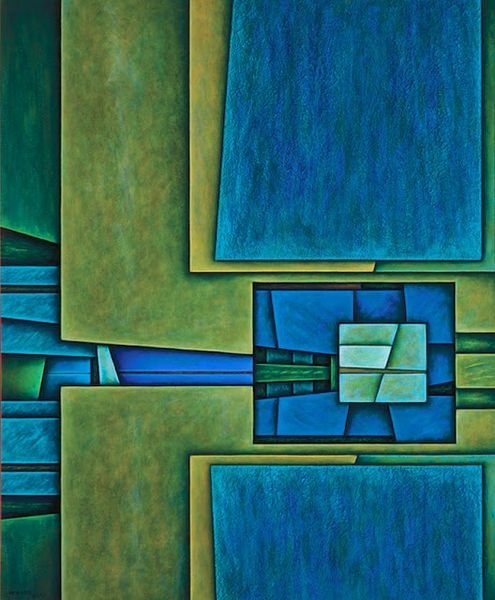
acrylic-paint
#
pattern-and-decoration
#
colour-field-painting
#
acrylic-paint
#
geometric
#
abstraction
#
line
#
modernism
Copyright: Joyce Kozloff,Fair Use
Curator: Welcome. We’re standing before Joyce Kozloff's "to Vuillard (Red and Green)", painted in 1970. Kozloff, an important figure in the Pattern and Decoration movement, created this acrylic painting in the style of Colour Field painting with strong geometric abstraction. Editor: It's oddly calming, isn’t it? Like a patchwork quilt reimagined by someone dreaming of digital landscapes. The blocks of colour feel deliberate, but not rigid. I'm drawn to the tension between those solid areas and the softer, almost vaporous triangles. Curator: That tension is key. While referencing Vuillard, known for his intimate domestic interiors, Kozloff disrupts that comfortable space with hard edges and a clear engagement with abstraction. In the early 70's, painting, like many things, was changing. There were debates raging about representation, and particularly how women were represented. Kozloff sought to critique art-historical narratives dominated by men by adopting "feminine" pattern making and decoration as legitimate art forms. Editor: "Feminine" in quotation marks, of course. I always find it fascinating how these loaded terms infiltrate art, don't you? You see something like this, seemingly straightforward in its abstraction, but really it's bristling with intent. Do you think that, perhaps, there is a visual connection between this aesthetic, and her exploration of decoration later? I think I see hints of Islamic tilework in the patterning here. Curator: Absolutely. Kozloff's later explorations of global art forms—Islamic tile work, pre-Columbian textiles—are deeply rooted in these early works. In "to Vuillard," the repeated patterns already signal an engagement with decoration as a political statement and are pushing against the minimalist style then dominant in galleries. It is significant that those forms have their origin in textile design or even beadwork, traditional areas of labor performed by women, often invisibilized. Editor: Invisible no longer. Looking at the surface quality, that almost raw, scrubbed-down feel… there’s a vulnerability there too. It's not pristine, not trying to be overly refined, I can relate. You can practically feel the artist's hand moving the paint. Curator: Precisely. The apparent simplicity belies the complexity of thought. It speaks to art's capacity to function on multiple levels—aesthetically pleasing yet deeply intellectual and culturally aware. The cross, too, created by a horizontal line and vertical stacks of patterns implies an interruption in tradition, that challenges traditional concepts of both Western and feminine artmaking. Editor: So, what seems like a calm arrangement becomes a site of radical contemplation. Thanks for sharing your insights, I see it in a new light now. Curator: Thank you. I'm happy to spark that conversation!
Comments
No comments
Be the first to comment and join the conversation on the ultimate creative platform.
